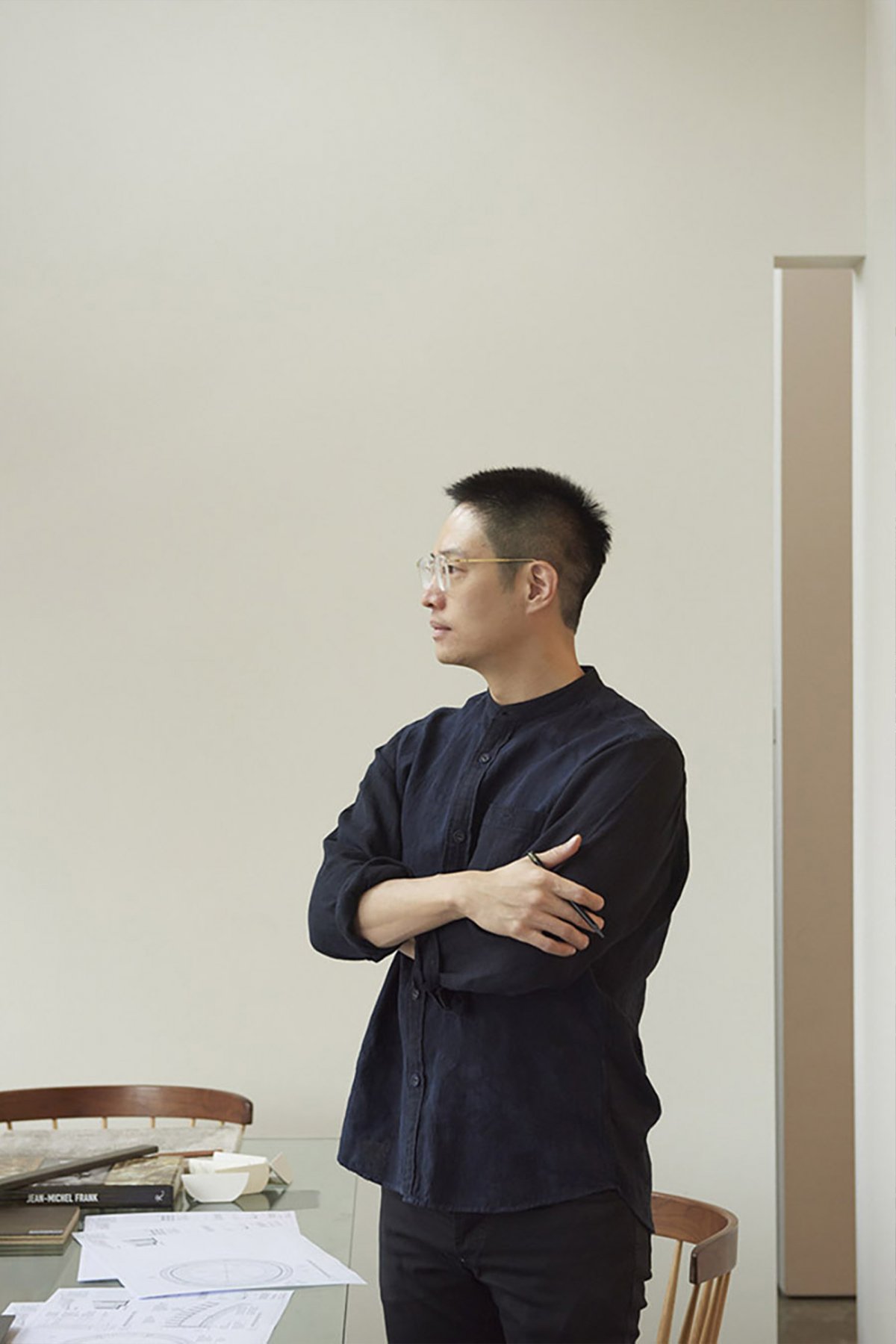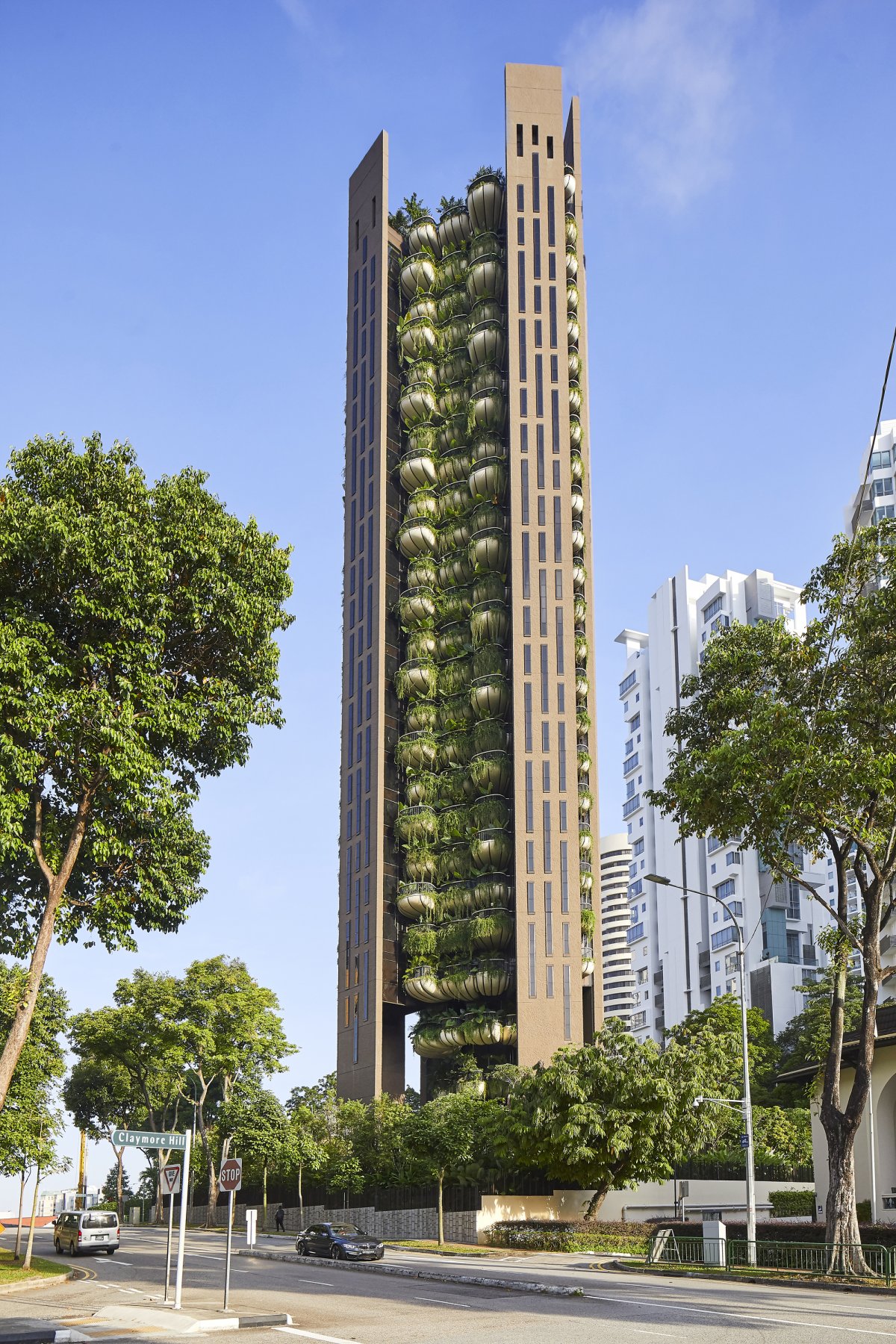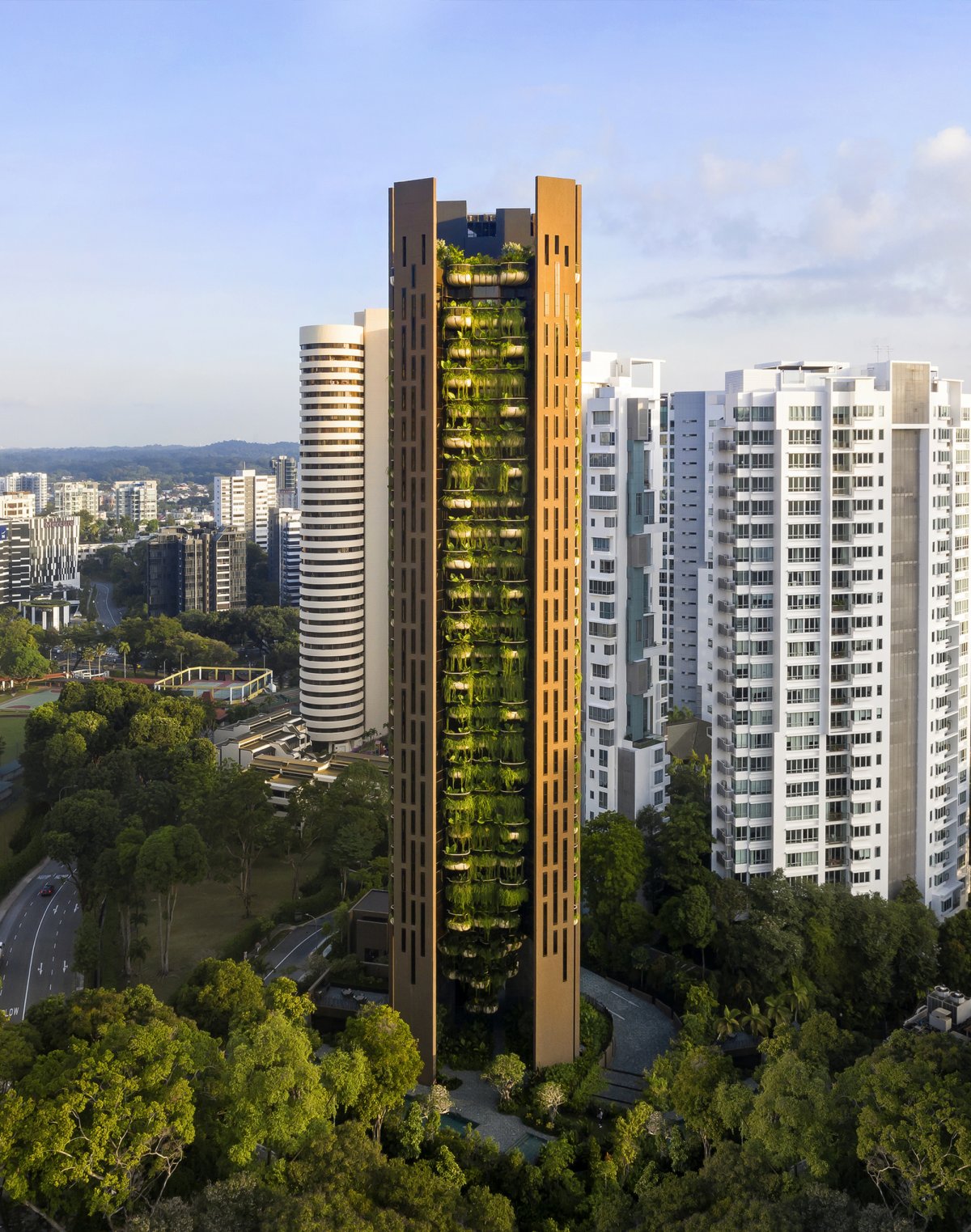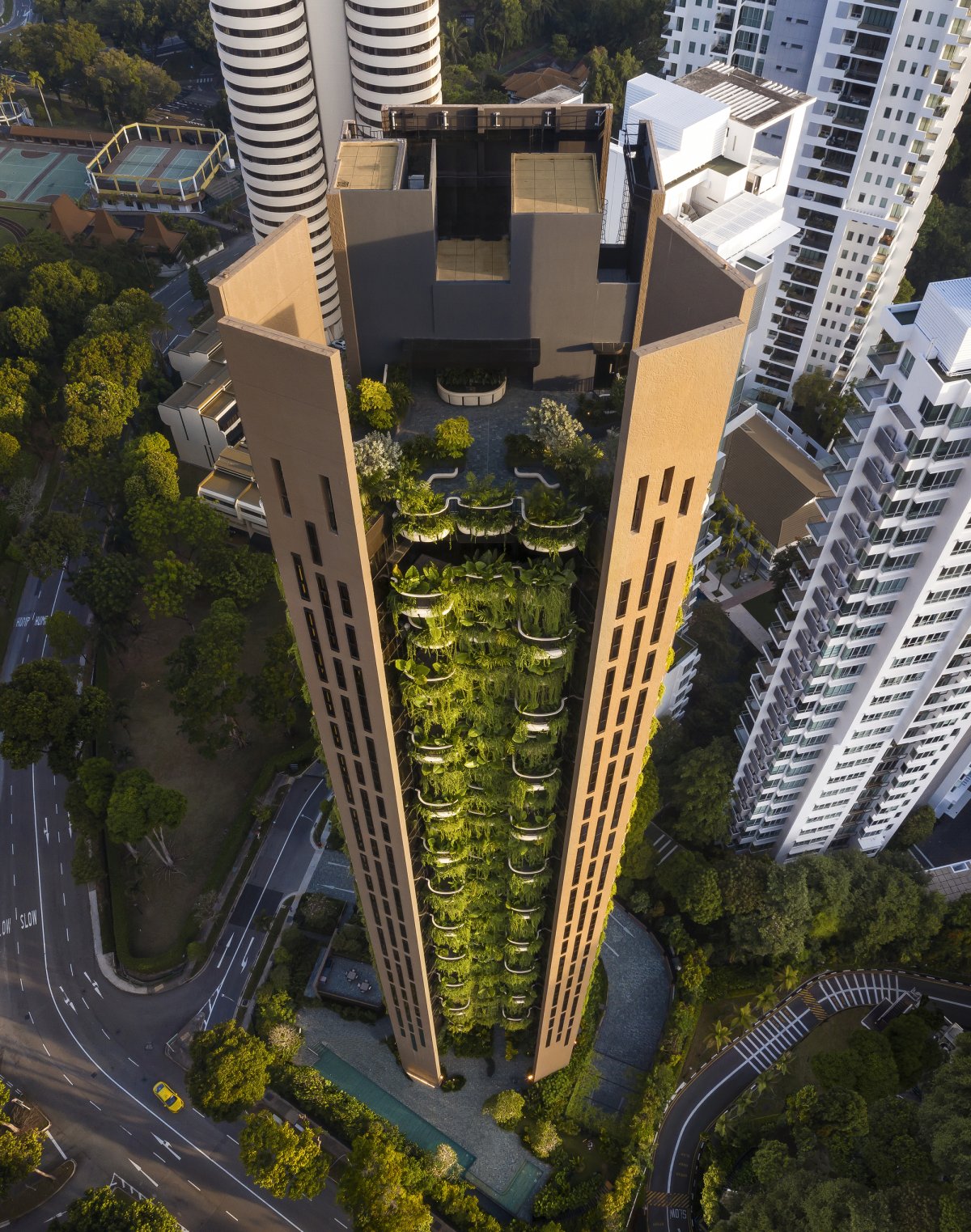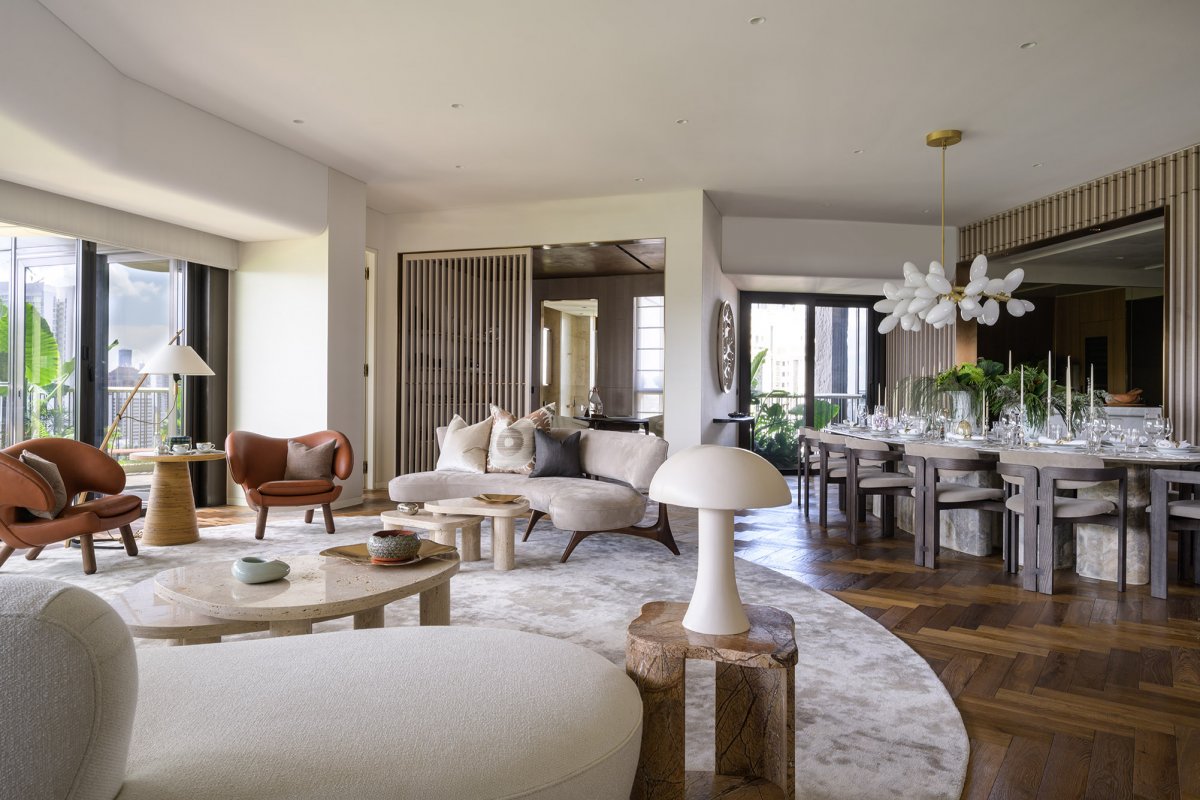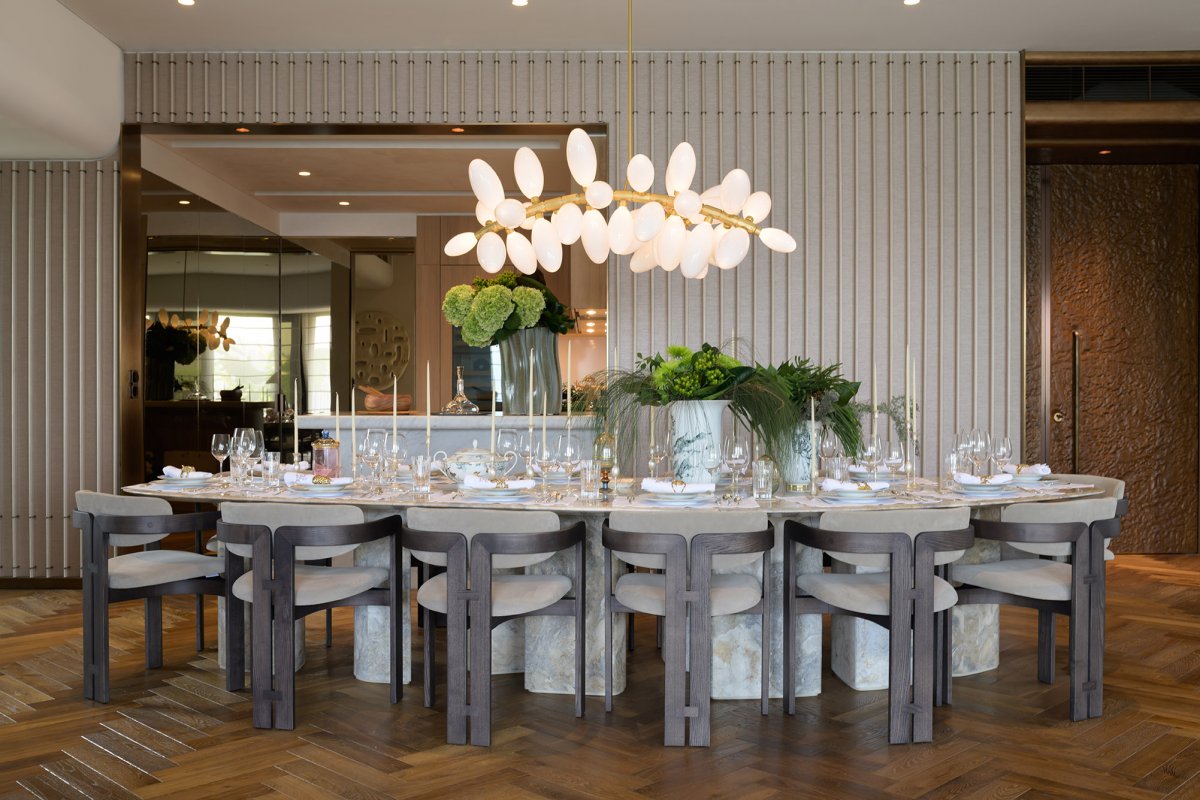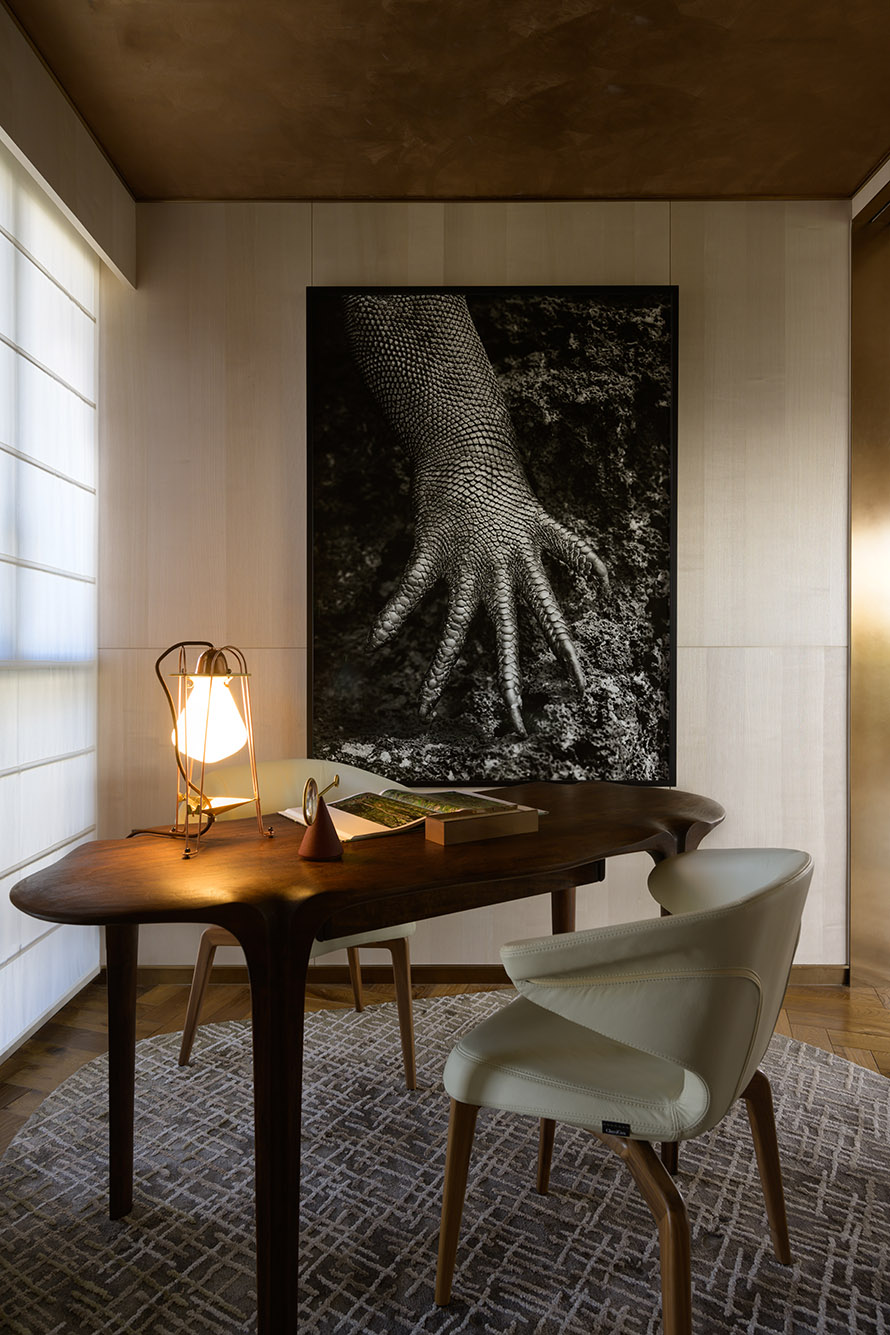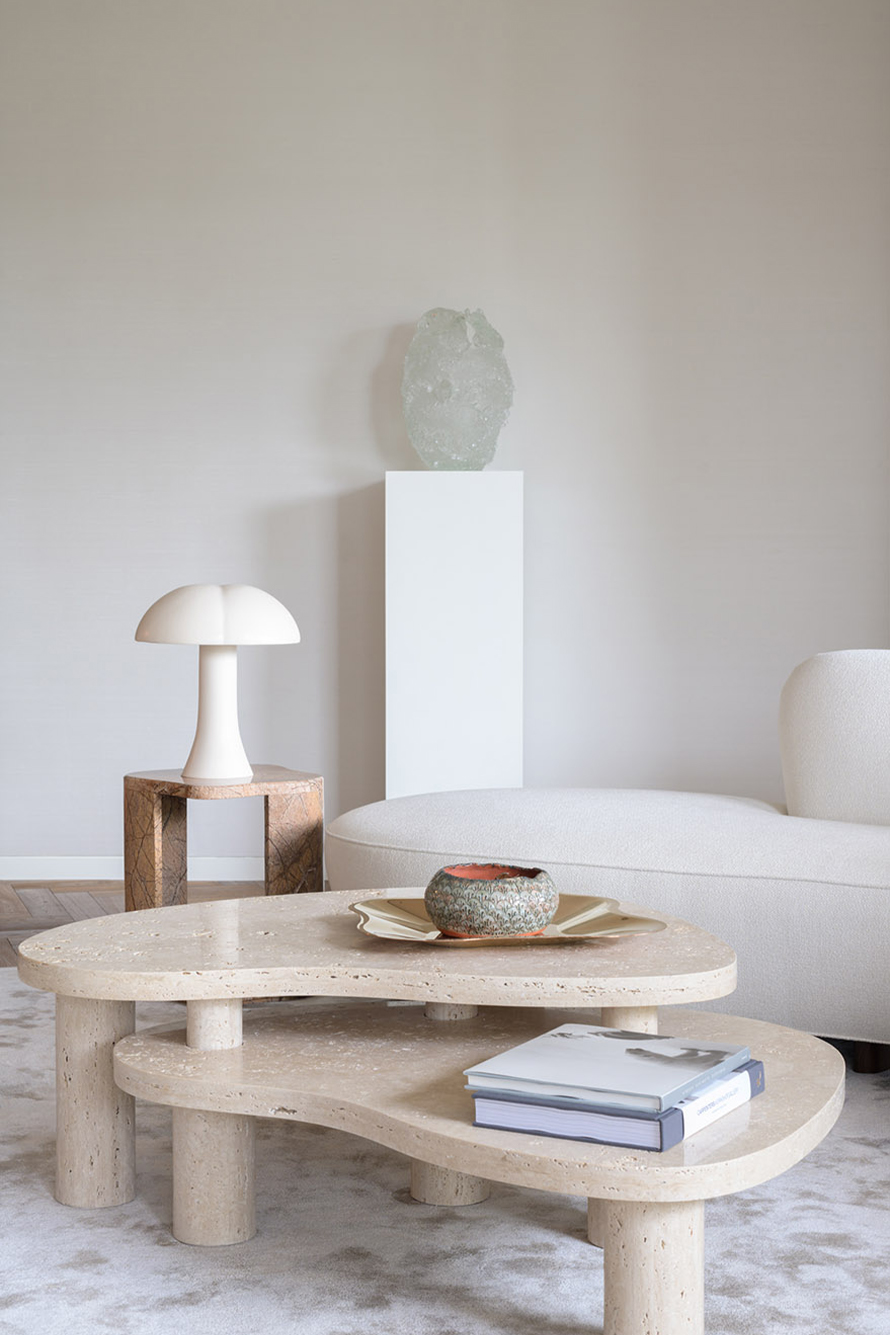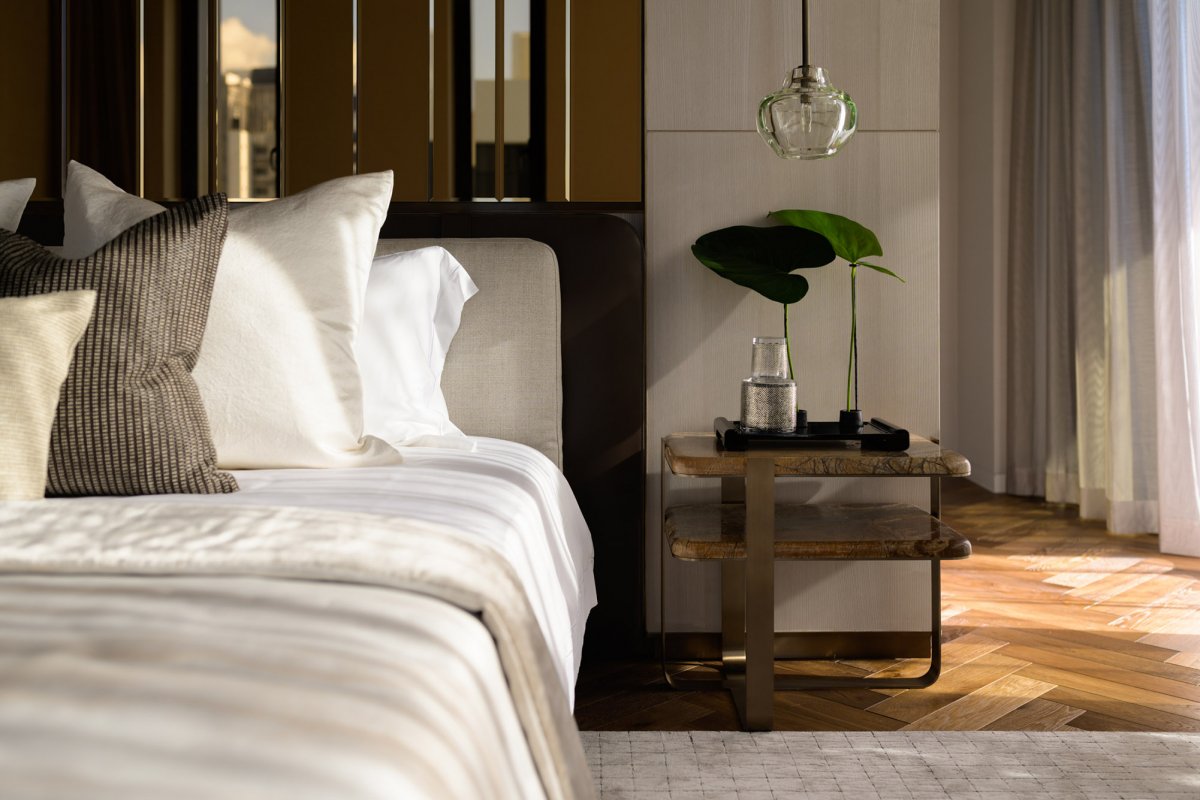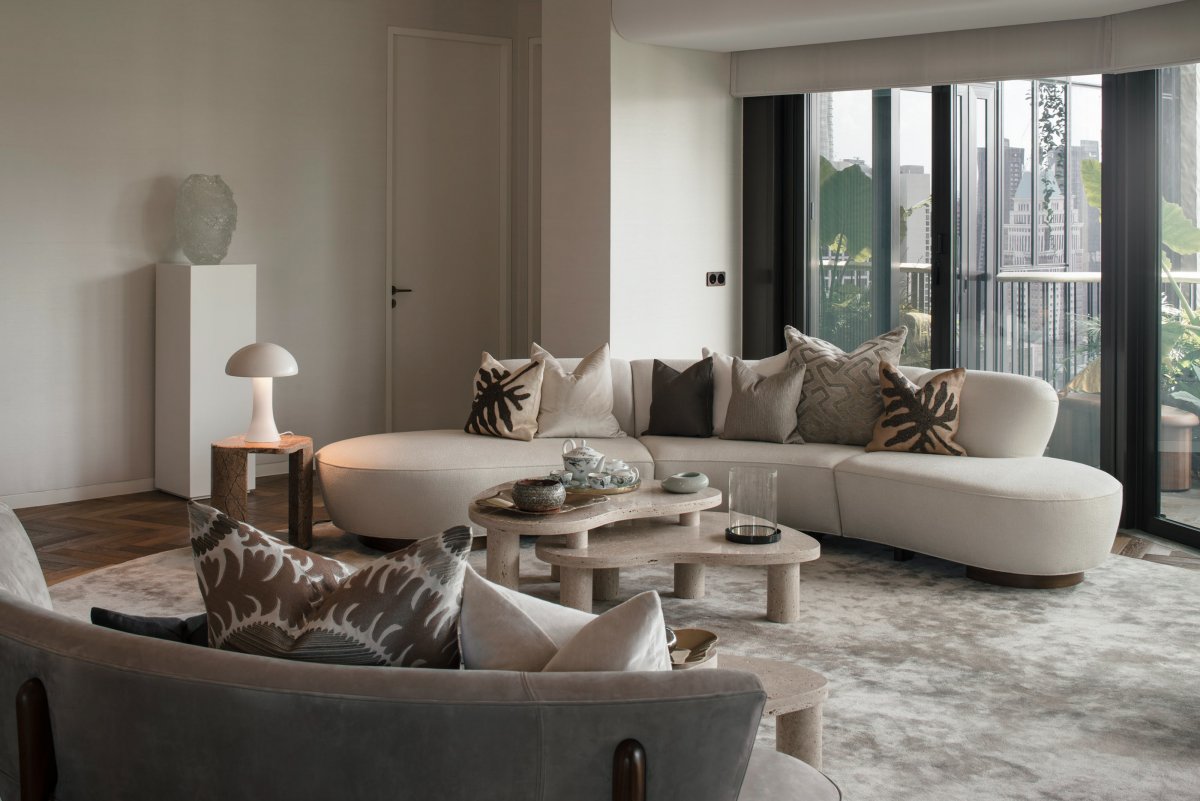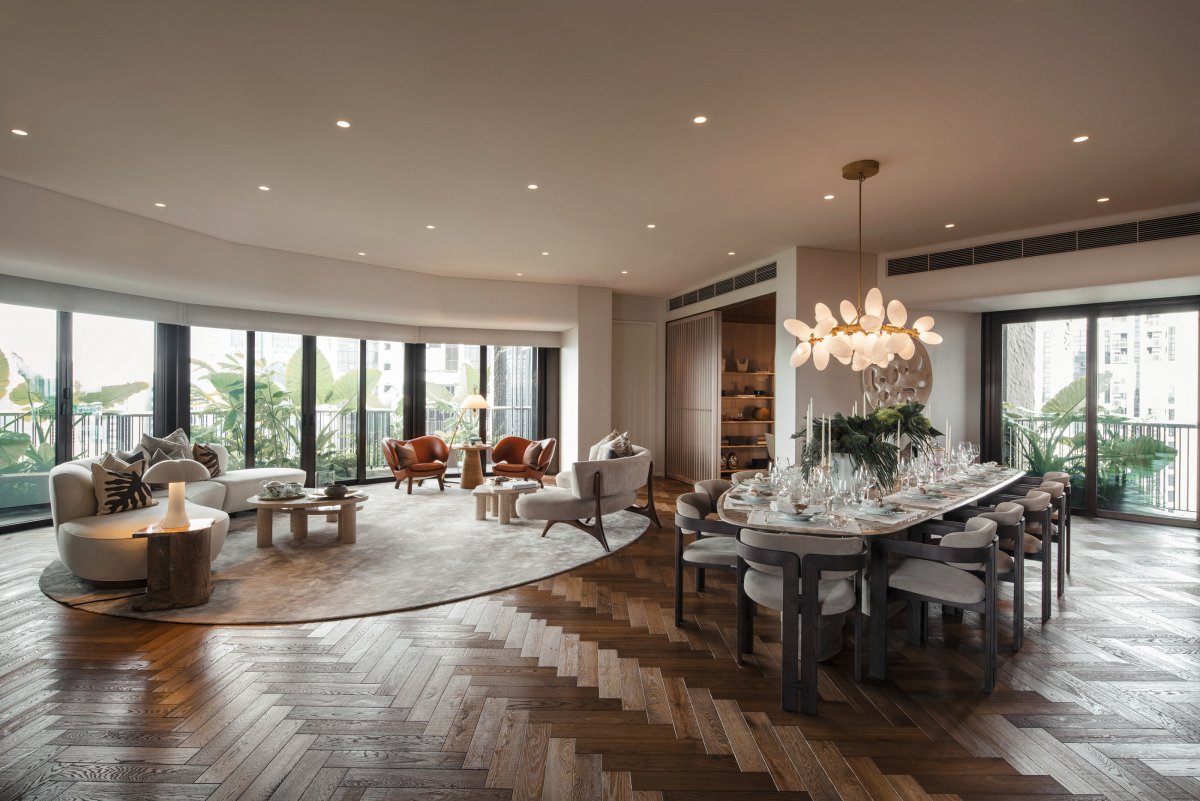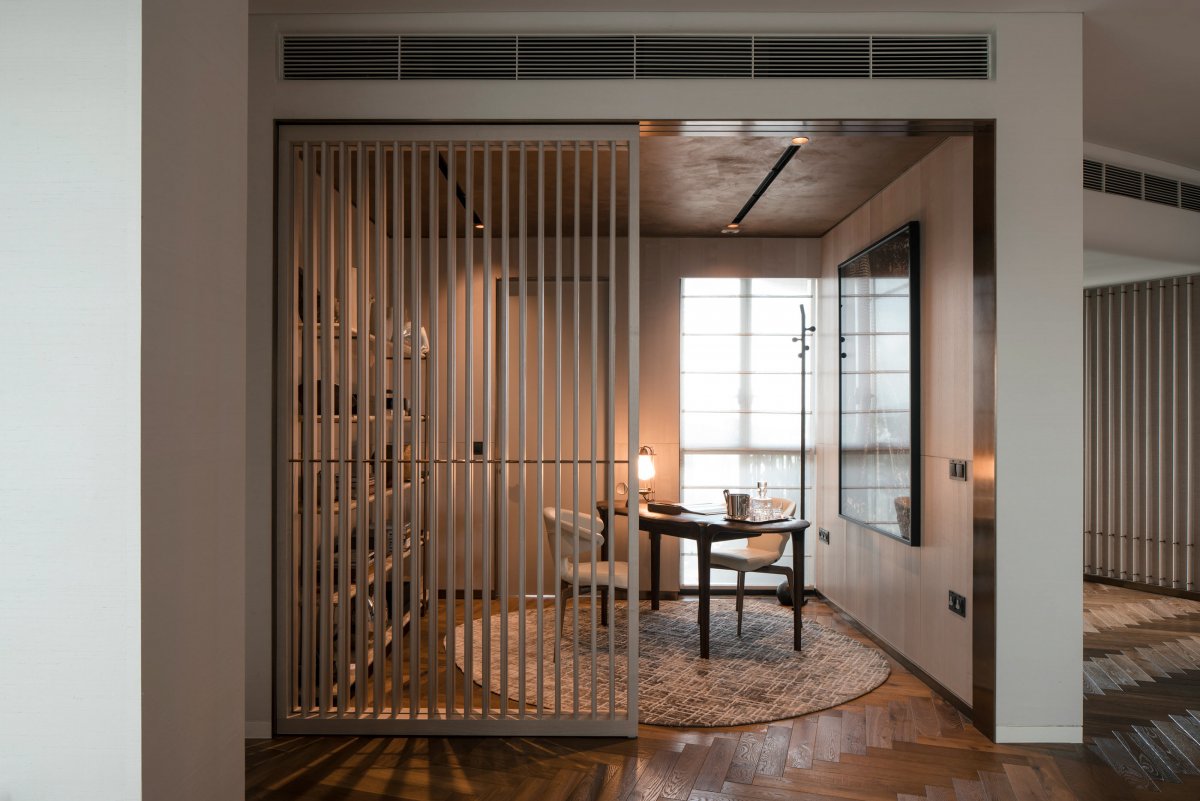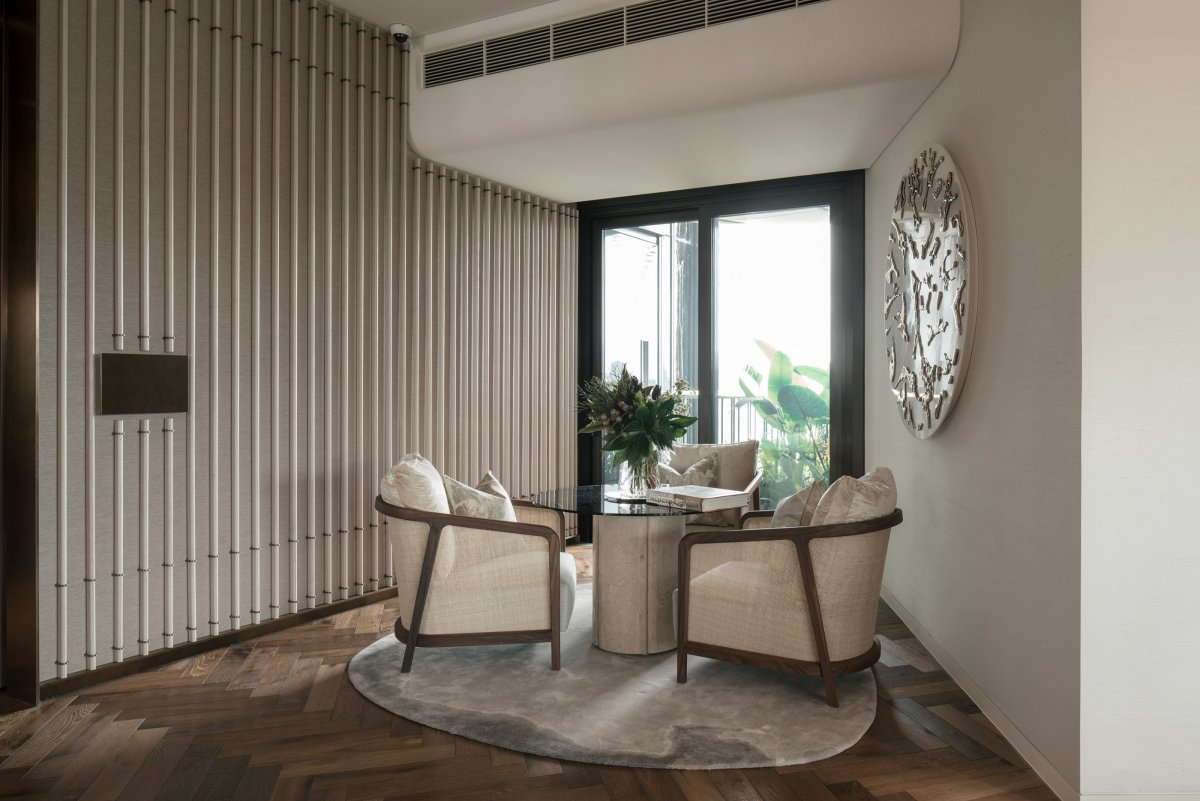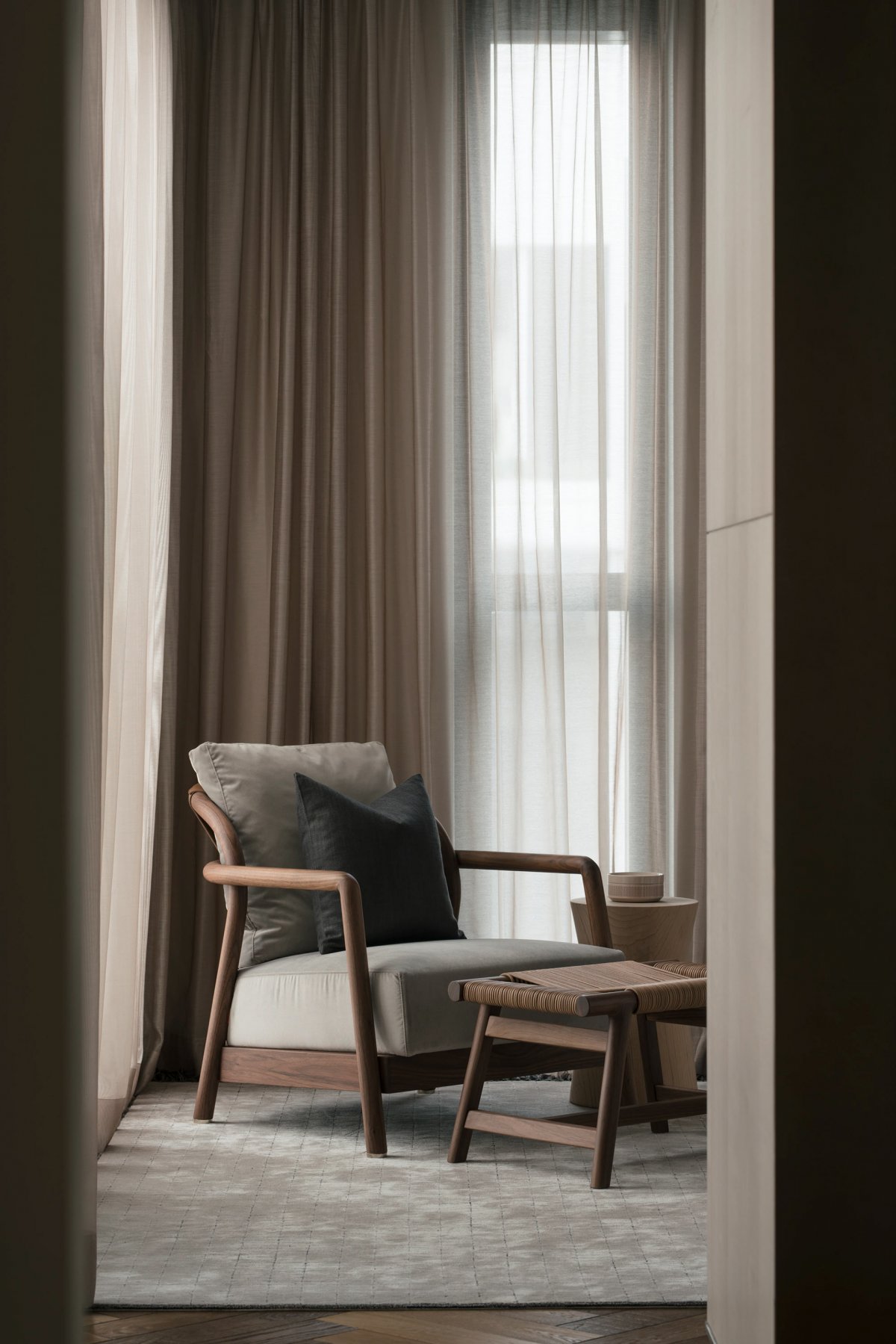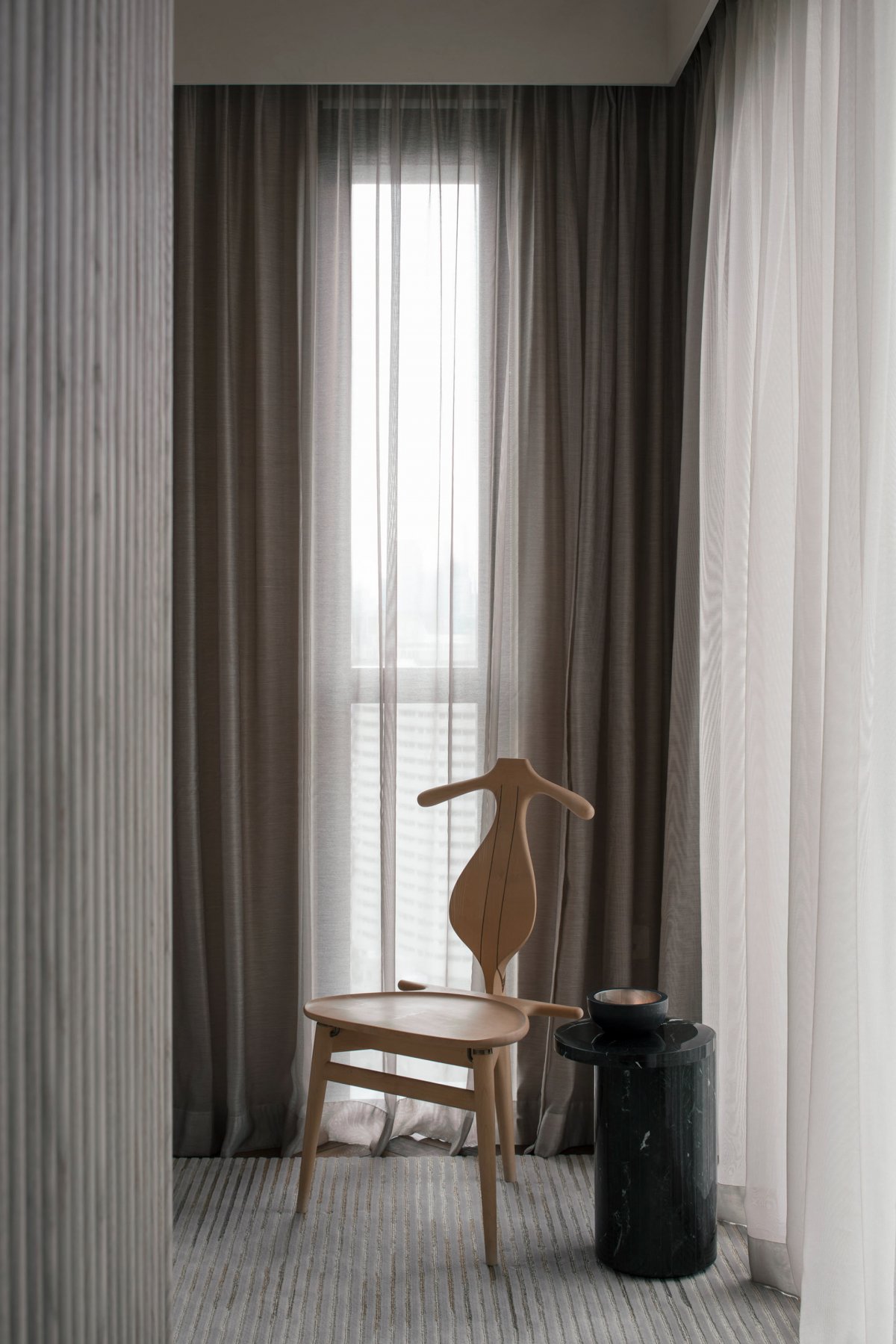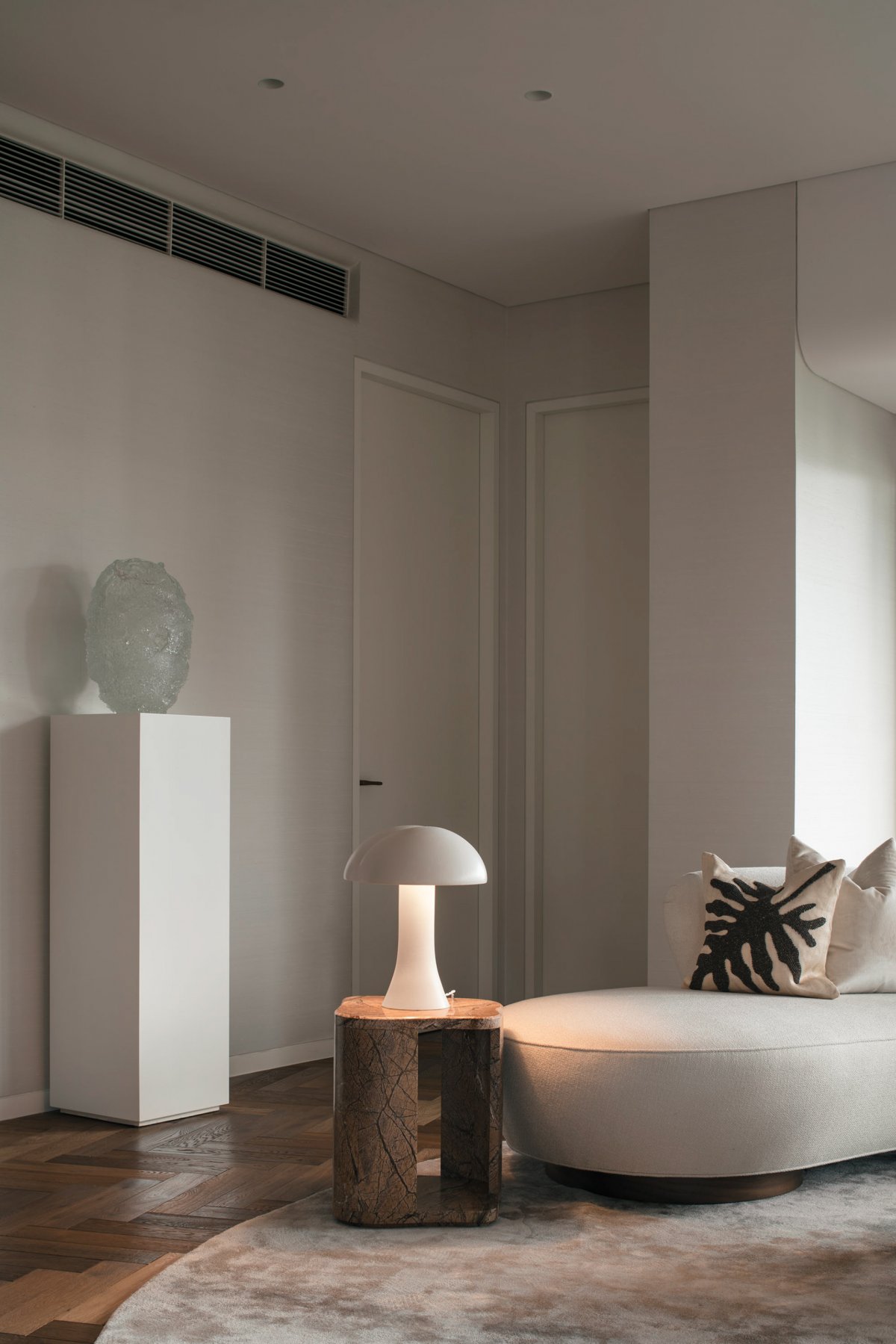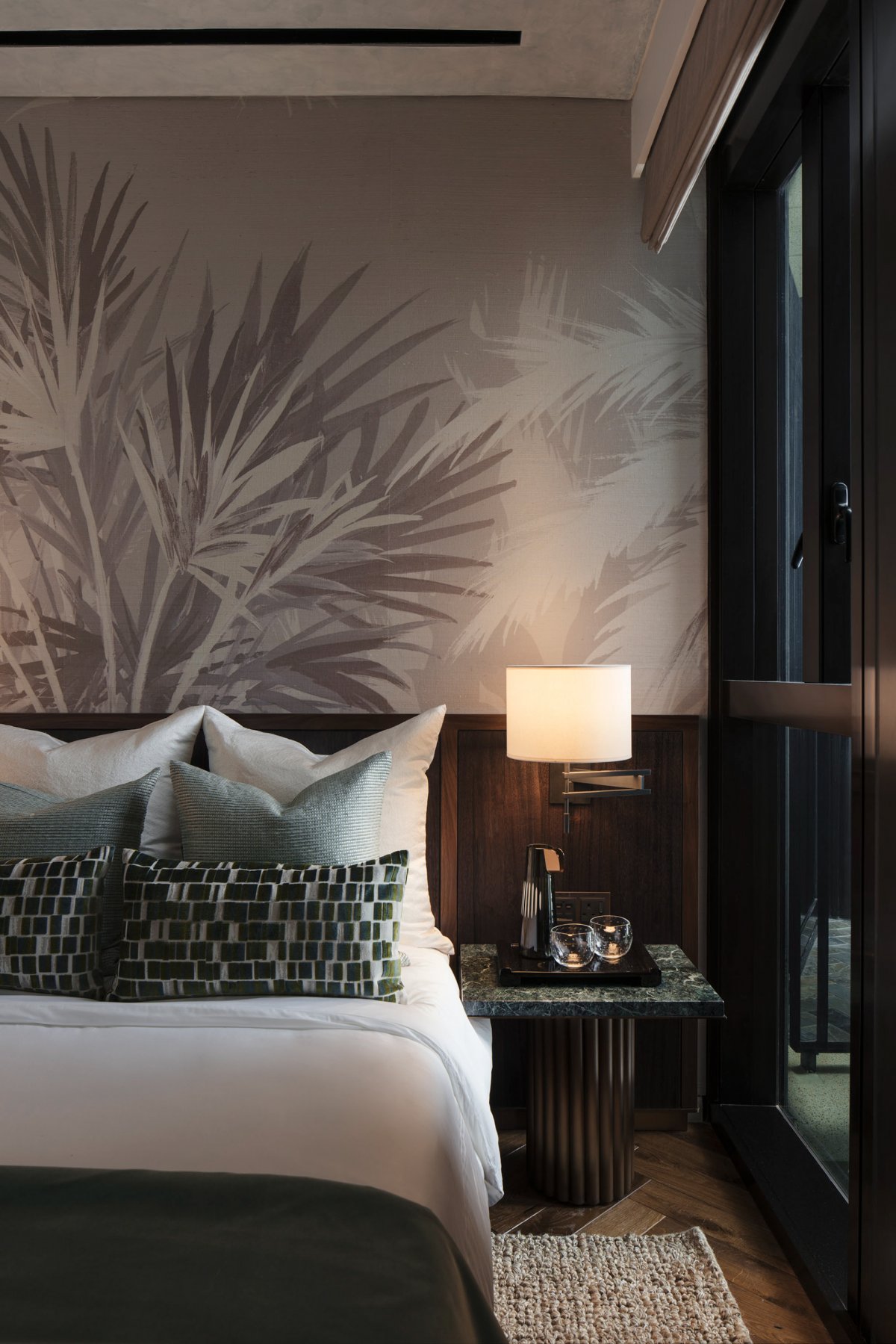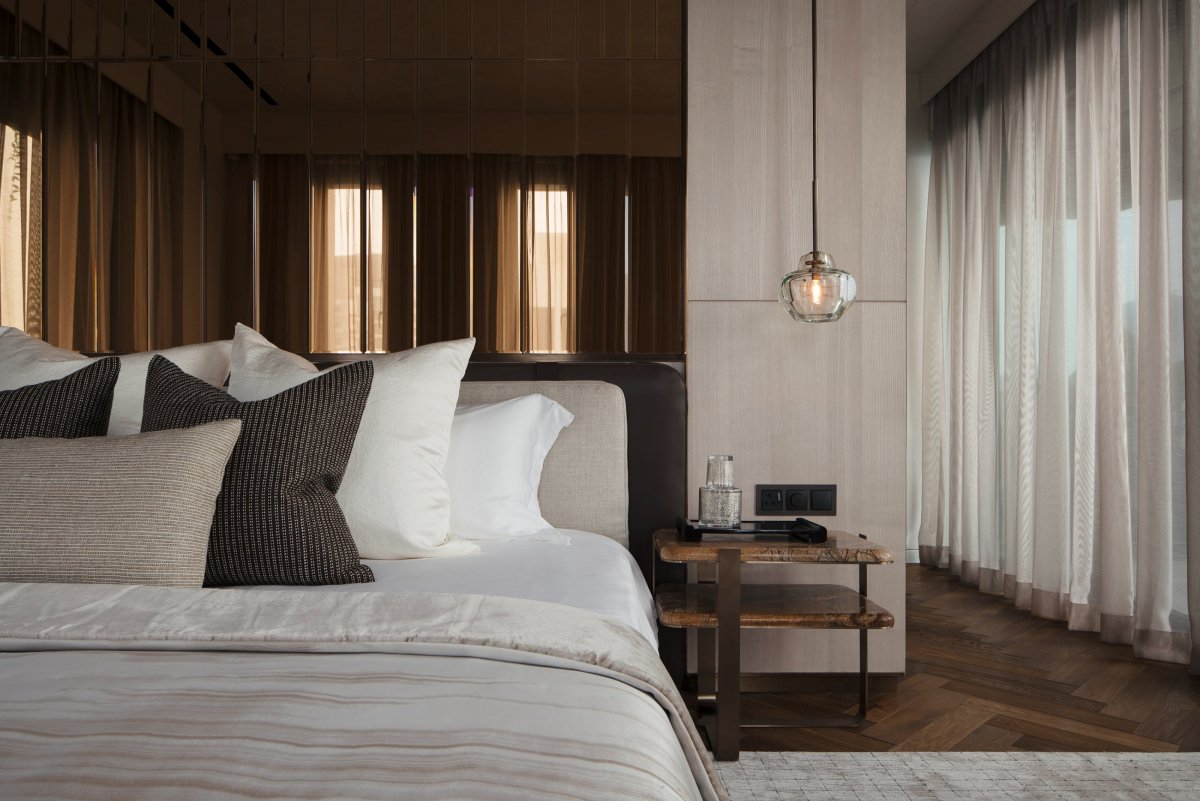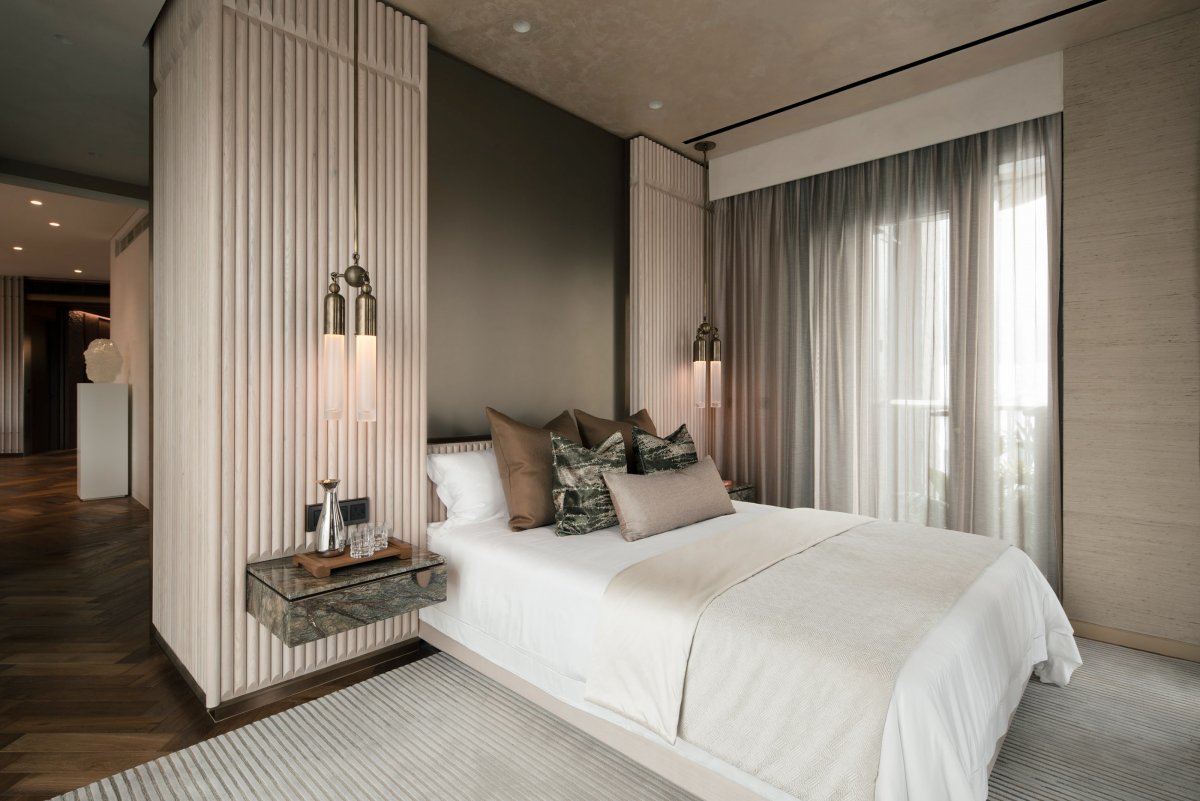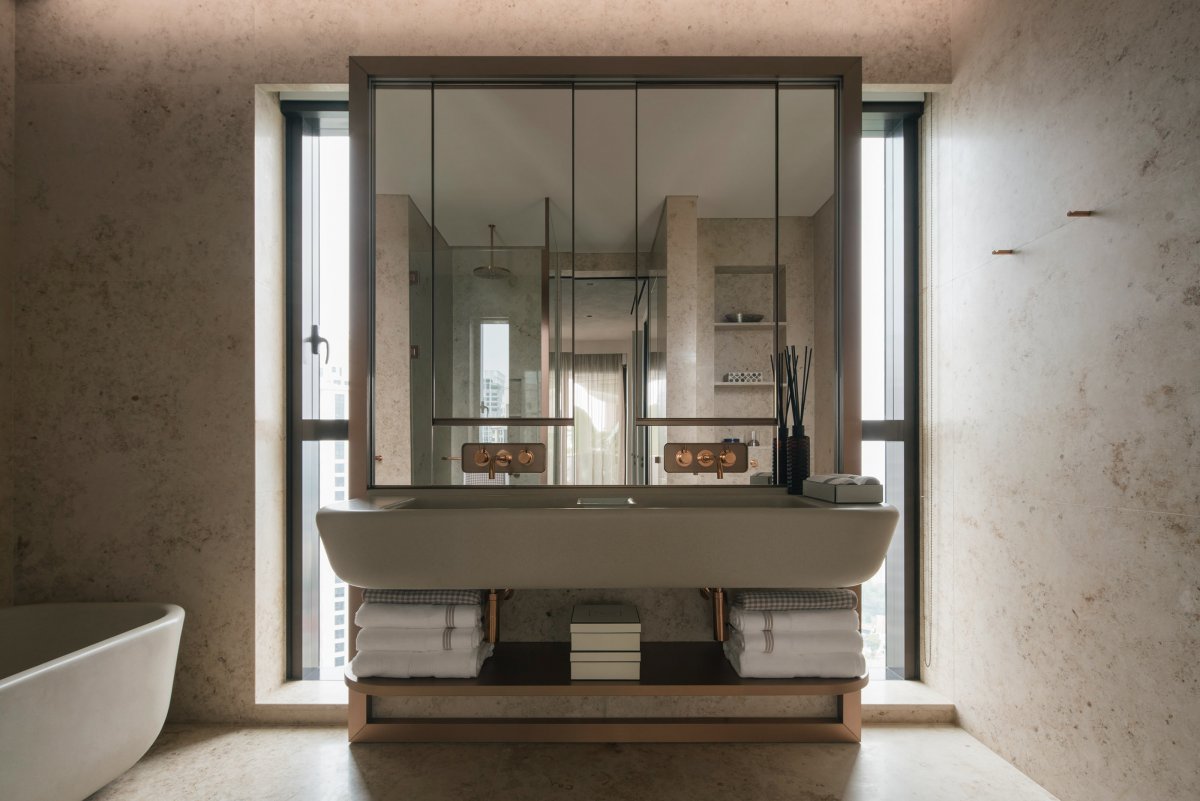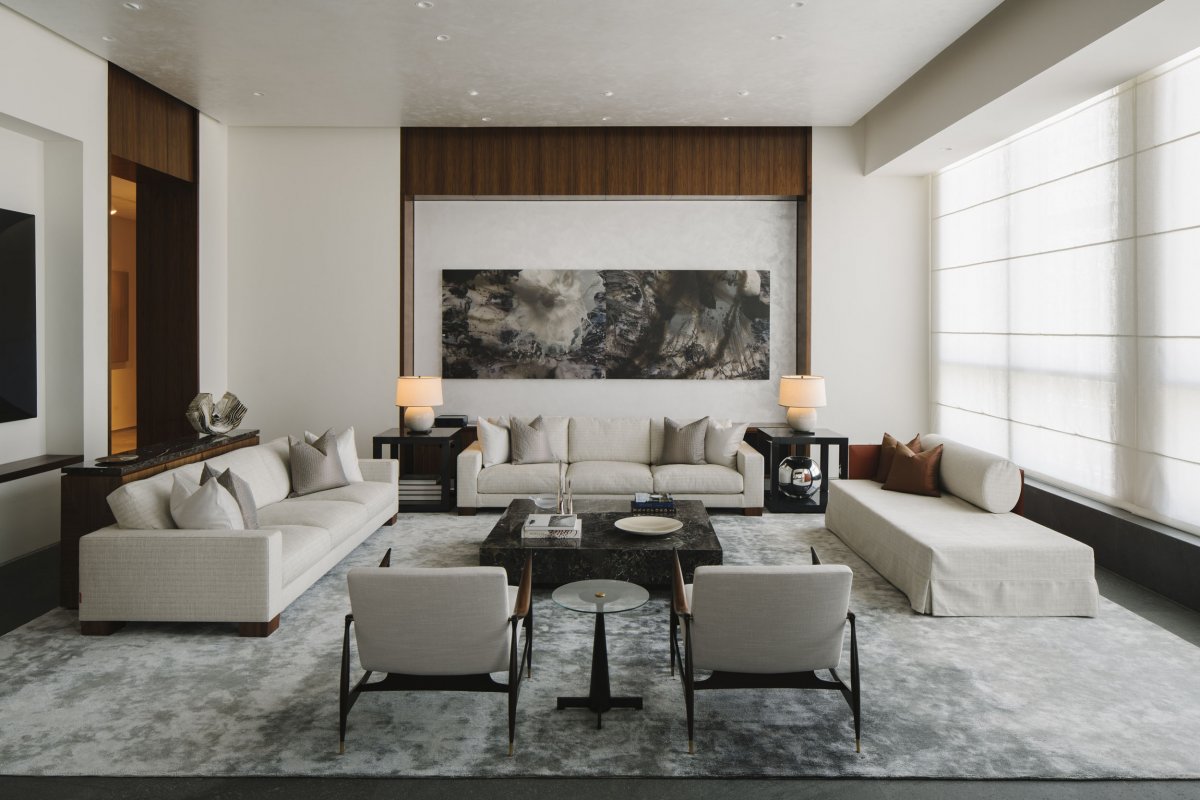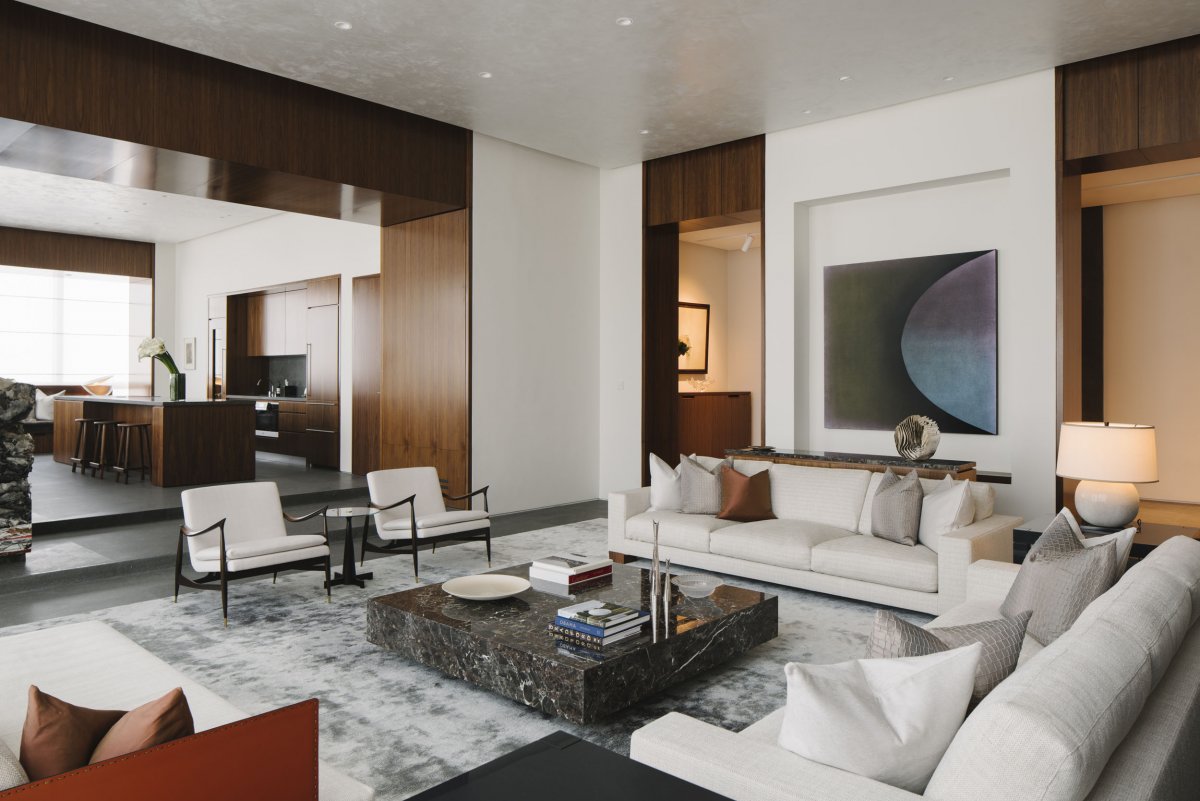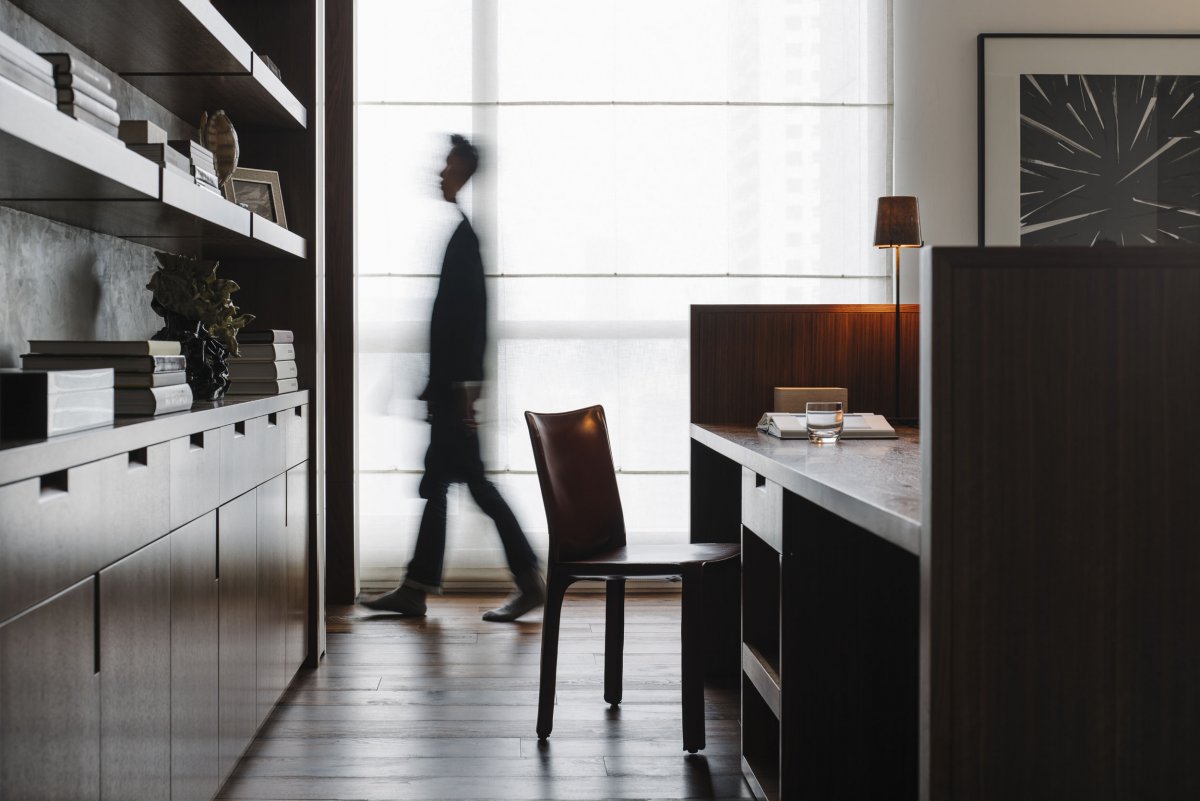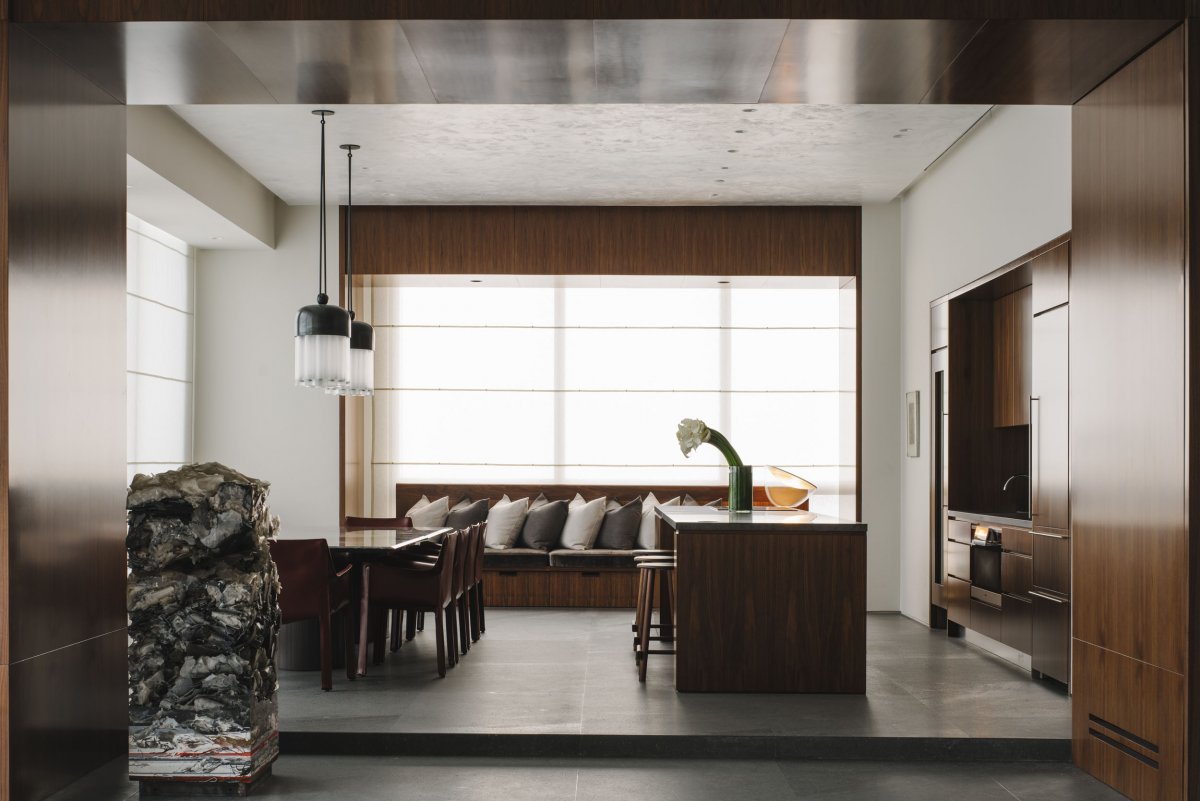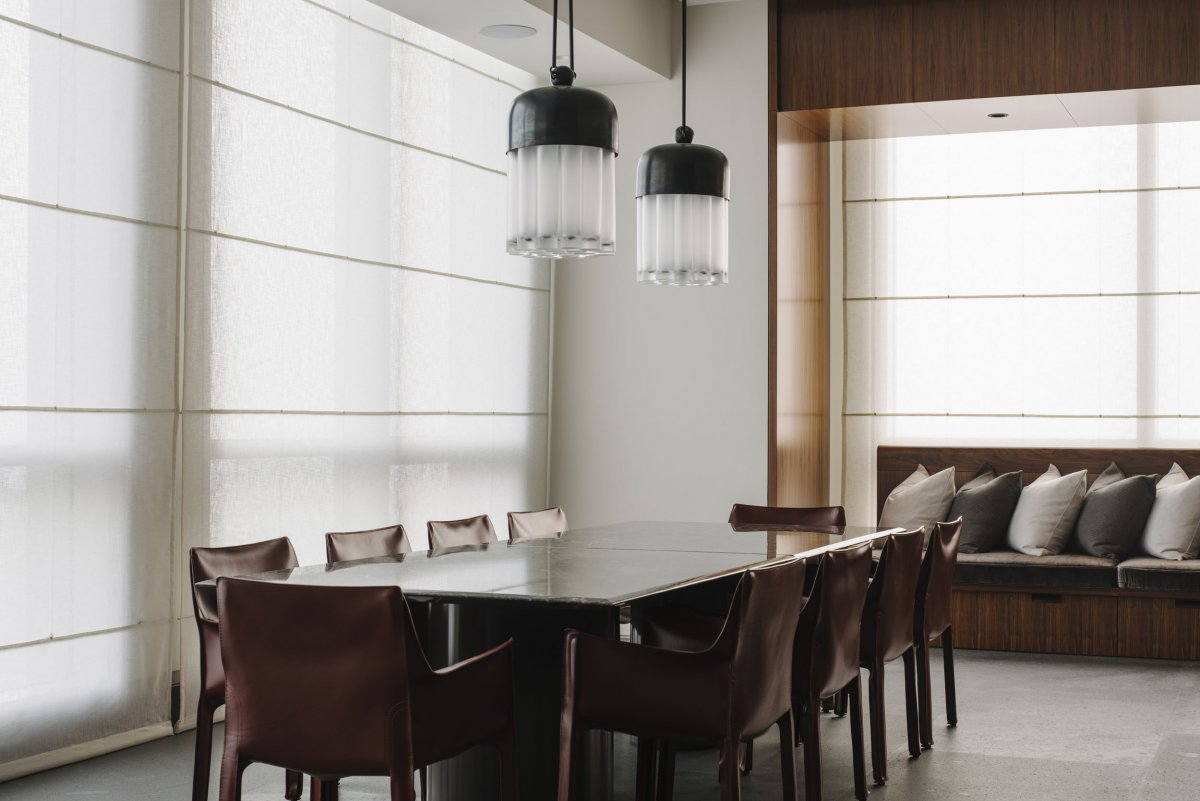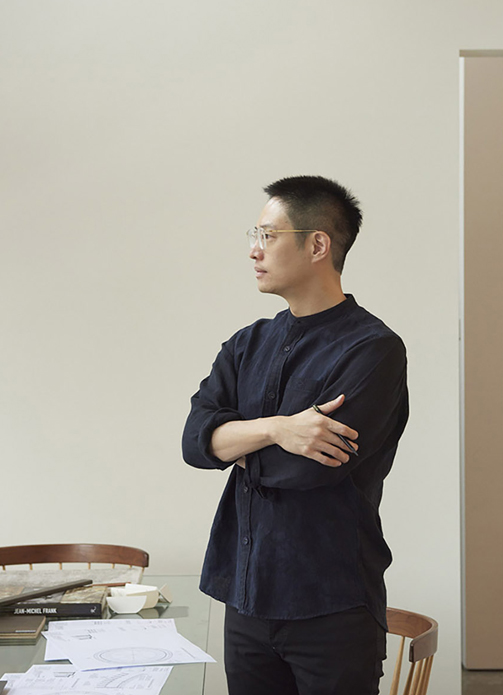
Brewin Design is a design company based in Singapore and Jakarta. Architect Robert has an in-depth understanding of the history of interior design and has explored the changing times of Western and Eastern cultures. This knowledge often affects the essence of his project.
Yinji:How do you think about the design of such a large-scale interior? What kind of lifestyle does EDEN represent?
Robert Cheng:The design brief from Swire Properties to us was to design a one-of-a-kind apartment suited to the unique, but challenging, interior architecture. For us, it was a priority to design an interior that complemented the building’s concept and architect’s vision. Because of the unconstrained living area, we blurred the threshold between the interior and the exterior, as well as the multiple balconies that introduce into the apartment ample sunlight and myriad views of lush foliage. The interior result, is a derivation of the building’s architectural concept of living in a garden.
We introduced bespoke furniture pieces and joinery details, meticulously tailored to the interior space and architectural concept, where a plethora of unique shapes that take inspiration from living organisms define the furniture pieces, creating a dialogue with the similarly organic building architecture. A quality of extreme refinement in the apartment was brought about through carefully crafted details all around, and through meditated forms that were custom-designed by both Brewin Design Office and other renowned international artists and furniture designers.
We curated a material palette that interplays organic textures reminiscent of nature and highly refined materials: elements of stone, rattan and timber were complemented by accents of metal and textured paint. Warm tones paired with off-white shades colour the spaces, bringing warmth and tranquillity into the home. We also sourced rare artwork pieces and accessories that correlate to the design concept from renowned galleries across the United States, Italy, Australia and Belgium, further accentuating the unique character of the apartment.
Our design team dedicated maximum attention to every detail, resulting in an almost entirely customised project. The final product celebrates not only the aesthetics and forms of nature, but also the culmination of specialized craft and artistry, achieving our goal of delivering an exemplary ideal of garden living in the urban context, bridging raw organicity and sophisticated luxury.
Yinji:Your work always has an elegant temperament, how do you do it? In terms of material performance, what characteristics of the material are more important?
Robert Chen:I place a heavy emphasis on materiality and the integrity of the materials used in each of our projects, and ensuring that the materials chosen have context within the environment they are placed in. Some of my favourite materials to work with are wood and stone. With wood, each piece is different and continues to move, breathe and change over time as it interacts with the environment. Finding the right piece, colour and grain is very much part of the design process. Solid stone has a certain weight and gravitas attached to it, and I enjoy using solid stone especially in our custom furniture pieces.
Yinji:Singapore is a desirable green country. You have designed many top real estate projects. What do you think is necessary for a good real estate project?
Robert Chen:Trust – A trusting relationship between the client/developer and their appointed consultants is a key foundational building block to a successful real estate project. We have seen projects fail when clients do not fully trust their architect or interior designer, resulting in clashing decisions that may compromise the design of the project. Time – Good design requires time, for ideas to be explored and options to be debated, to allow the best design solution to be delivered, rather than rushing through the design process.
Yinji:Has the COVID-19 affected you? How did you deal with it?
Robert Chen:COVID-19 has definitely impacted us as a studio, but we have used this as an opportunity to re-assess our design and business processes to eliminate inefficiencies and to adapt to this new normal for the foreseeable future. Several ways in which we have responded to the pandemic:
1.Change in our approach to travel:About half our current projects are overseas, and we have had to adapt to not being able to travel, finding other ways to build, nurture and maintain relationships, and making the best use of available video conferencing technology to conduct client meetings, presentations and workshops. While this has helped us realise that some efficiency can be achieved through adopting such technology, there is still no replacement for that face to face interaction and we do look forward to being able to meet face to face when the time comes.-Project-related travel aside, travel has been one of our main sources of inspiration, to be able to see and touch the buildings and things you see and read about online and in books. Not being able to travel forces us to seek inspiration elsewhere, and rely on other online portals and subscriptions to online publications a lot more than before, and being more proactive to share these amongst team members.
2.Shift to working and collaborating with clients, partners, and internal staff remotely, and adopting clear and open communication between all parties. Design is very much a hands-on process and a lot of the creativity comes about through unplanned collaboration, dynamic and impromptu discussions that relies on team cohesion and social interaction, which cannot be replicated in a remote setting. While it is challenging for those in our industry to work remotely, the virus outbreak has forced us to rethink the dynamics of collaboration, and to be disciplined about using applications like Skype, Microsoft Teams and Google Hangouts to force team interaction, and accountability, when working from home. We have put systems in place to allow staff access to the company server from home, and have at the same time stepped up IT security as a precautionary measure. In these remote settings, as an employer we have to be flexible, and place our focus on specific goals and deliverables, achieving the best of what we can with the resources available.-Our clients are also kept in the loop of our continued operations and are informed of how we will continue to carry out projects despite potential setbacks caused by the virus. Open and clear communication is key to ensure a properly functioning work relationship.-This crisis has also given us the added opportunity to streamline workflows. It has forced us to be quicker to react to changing market sentiments, client expectations and new information. Limiting site visits, in person meetings etc, are lessons in increasing productivity which could be useful in the long run.
3.Adapting to supply chain disruptions. One of the big impacts COVID-19 has had on the world is a disruption to supply chains. In our office, we source a lot of our materials and FF&E overseas, from places like Europe and the US. Lockdowns across many countries has meant that our access to these items is cut off, and we now have to get more creative, explore a lot more locally built furniture from our own Brewin Collection.
- Architect: Brewin Design Office
- Photos: Jovian Lim Common Studio
- Words: Ying
